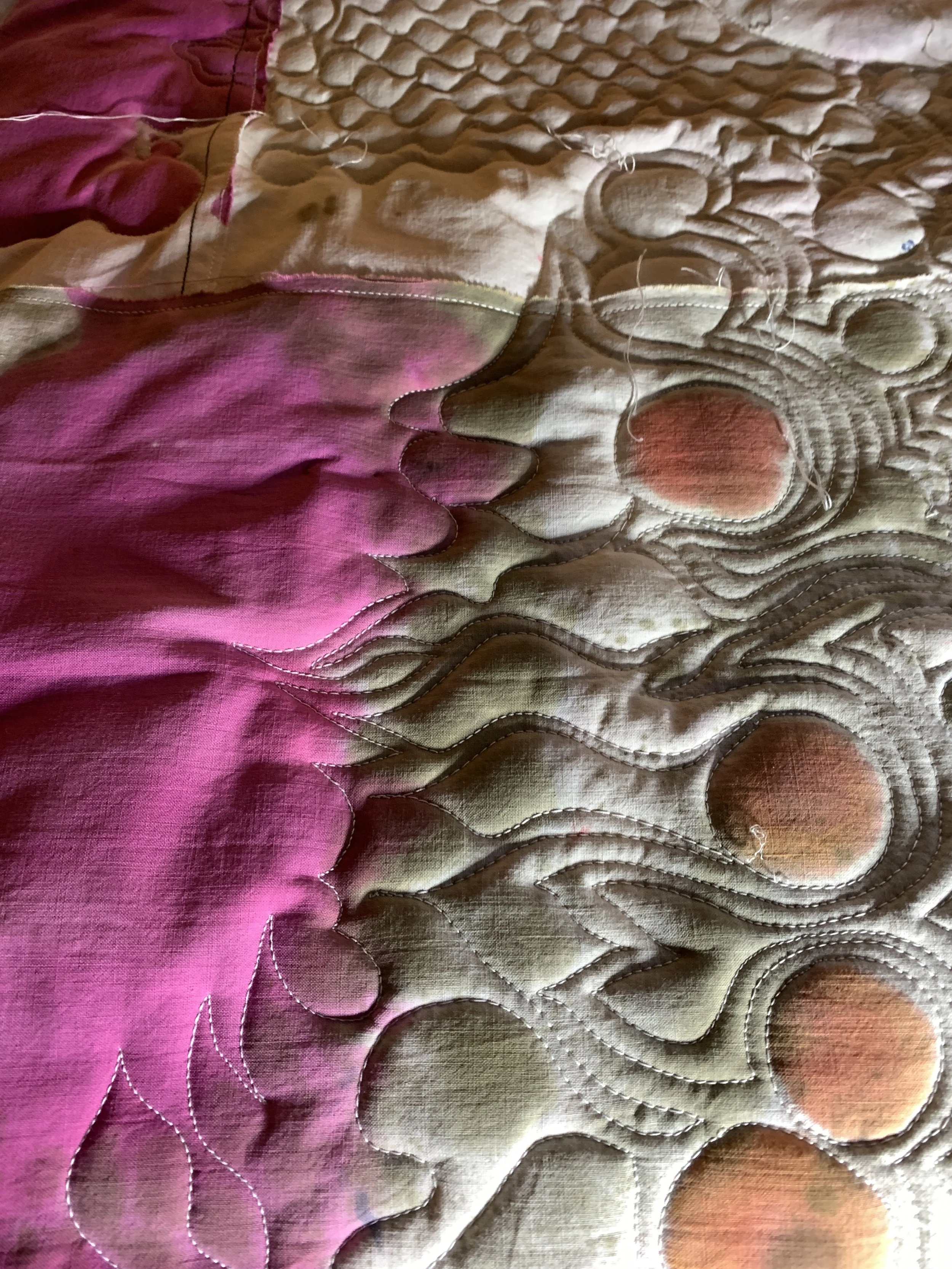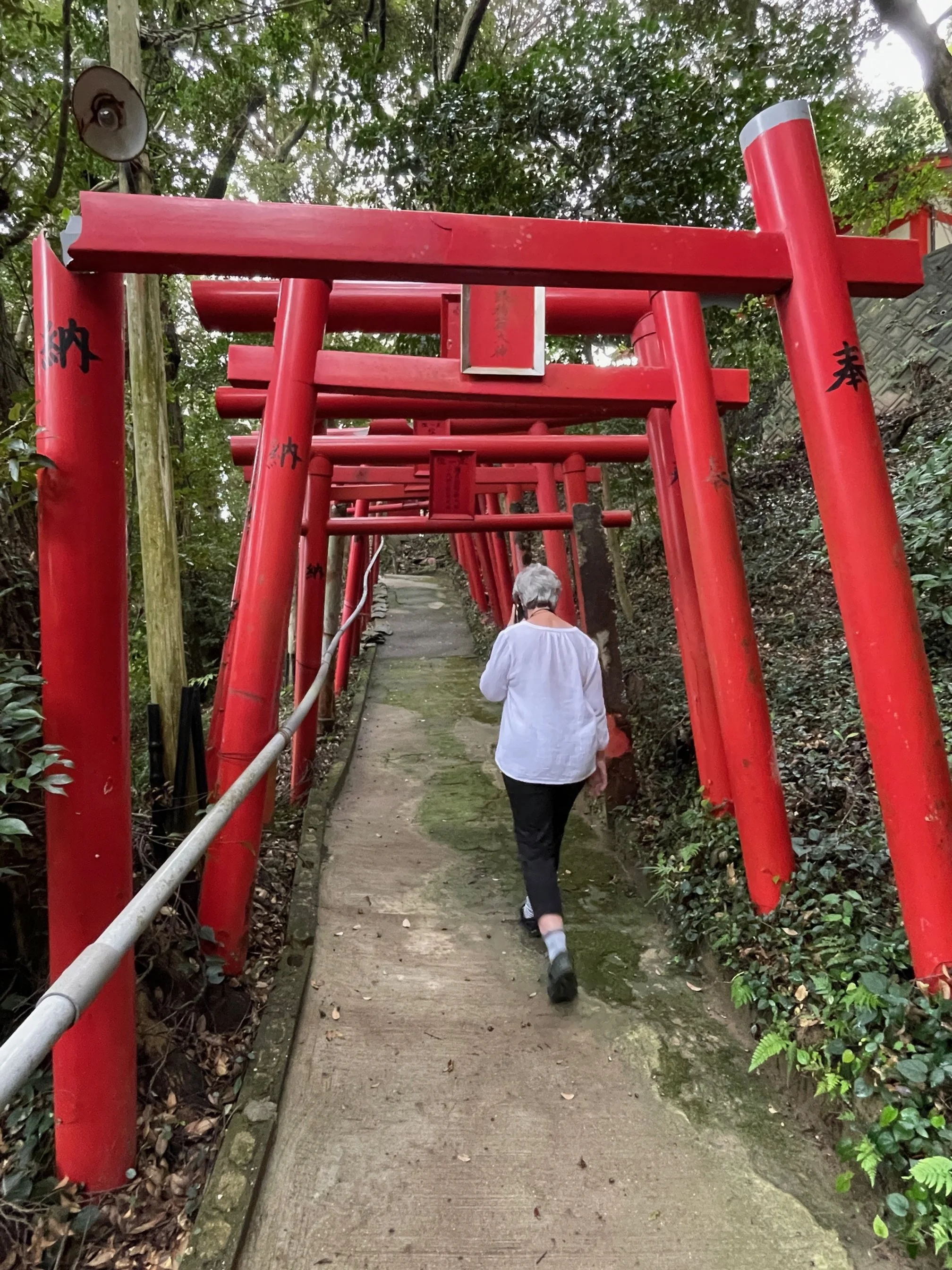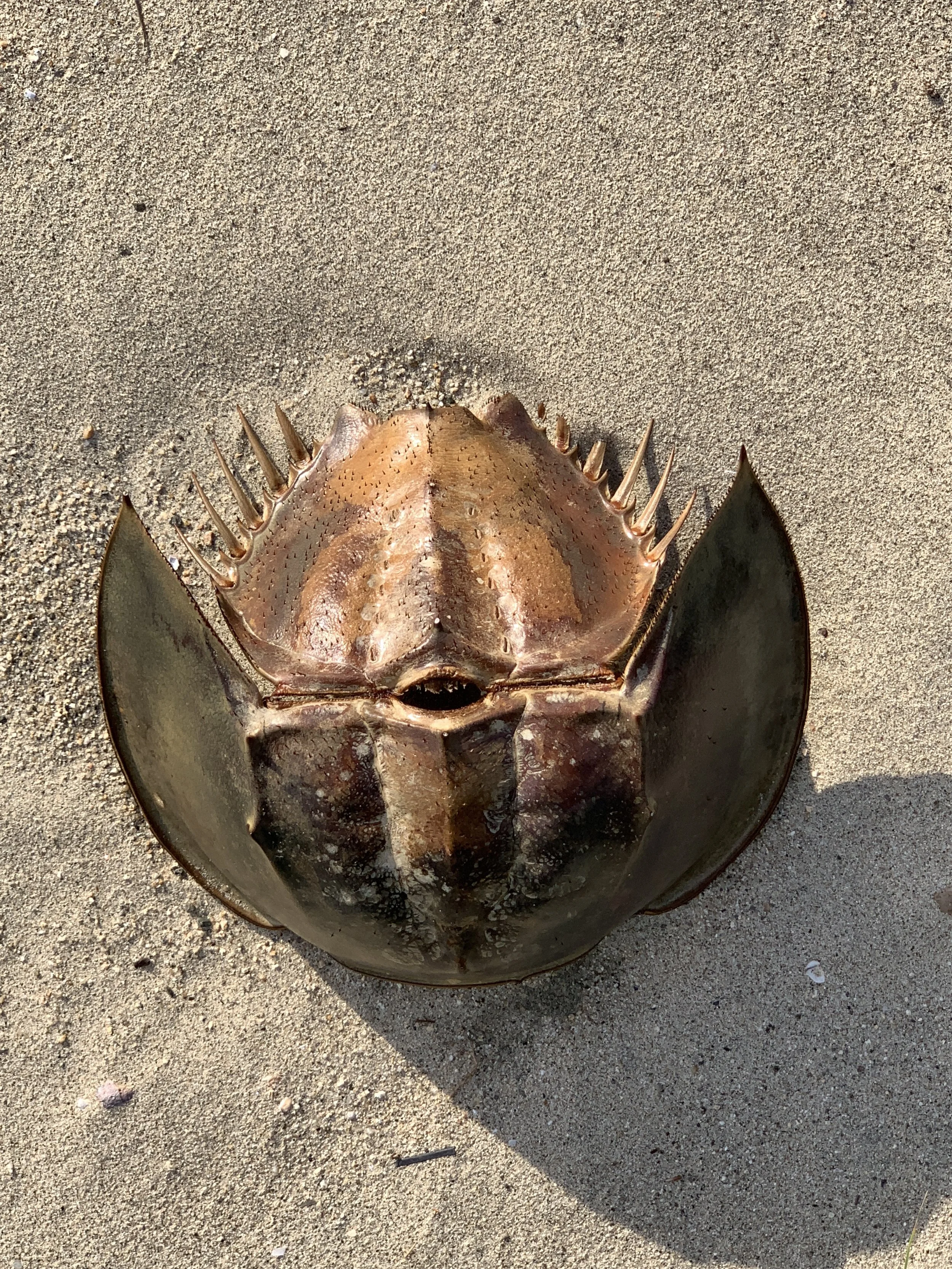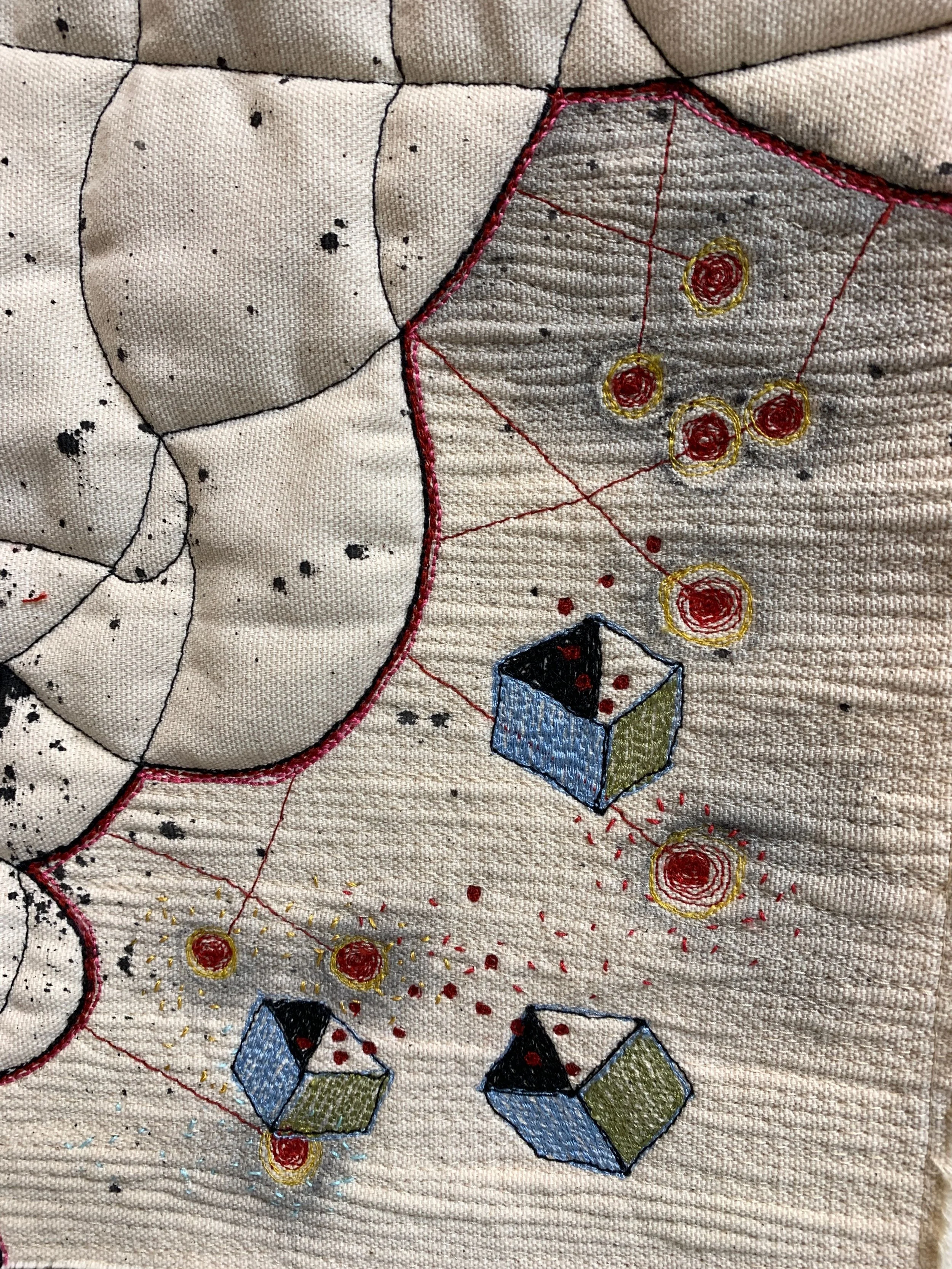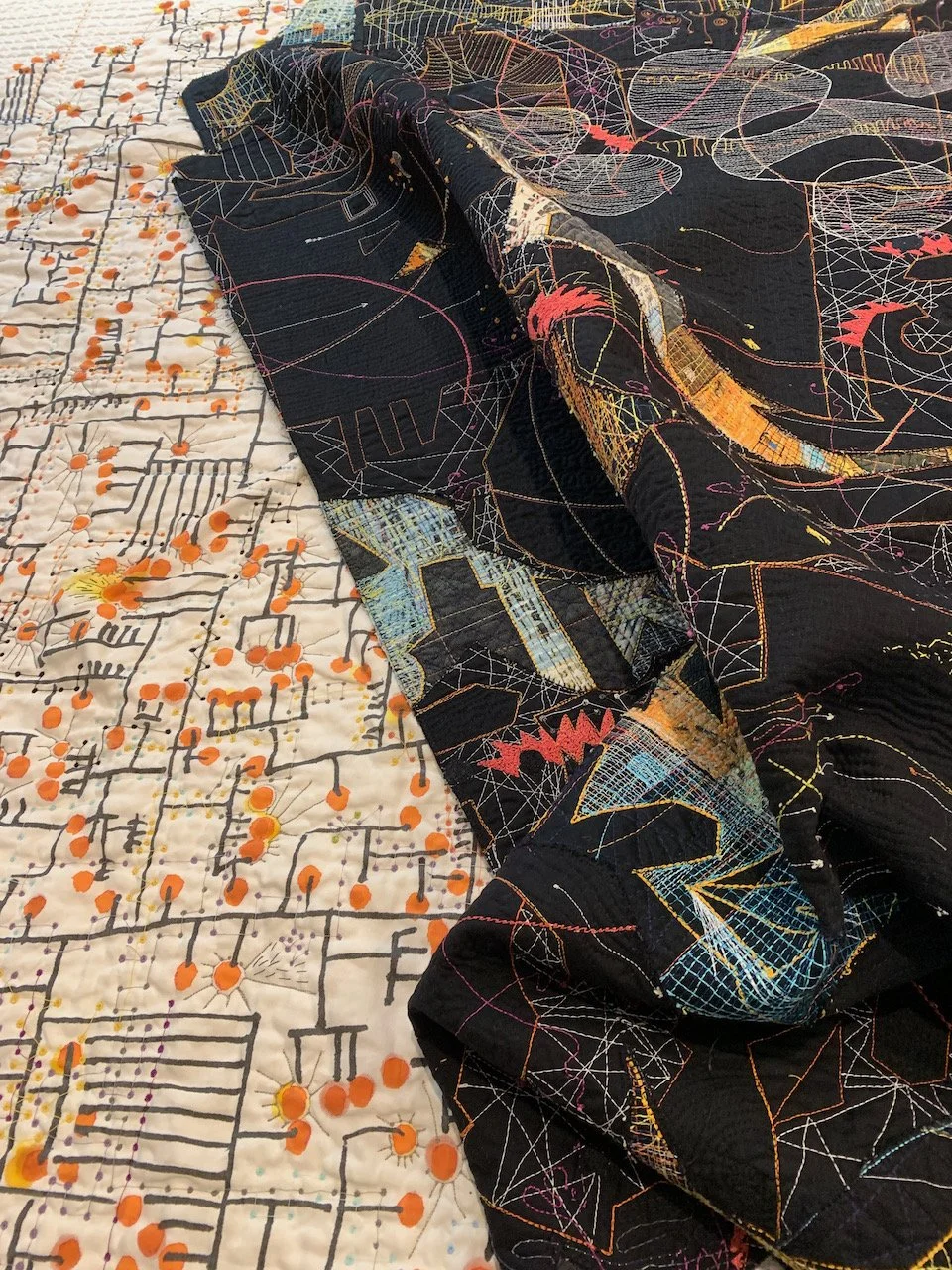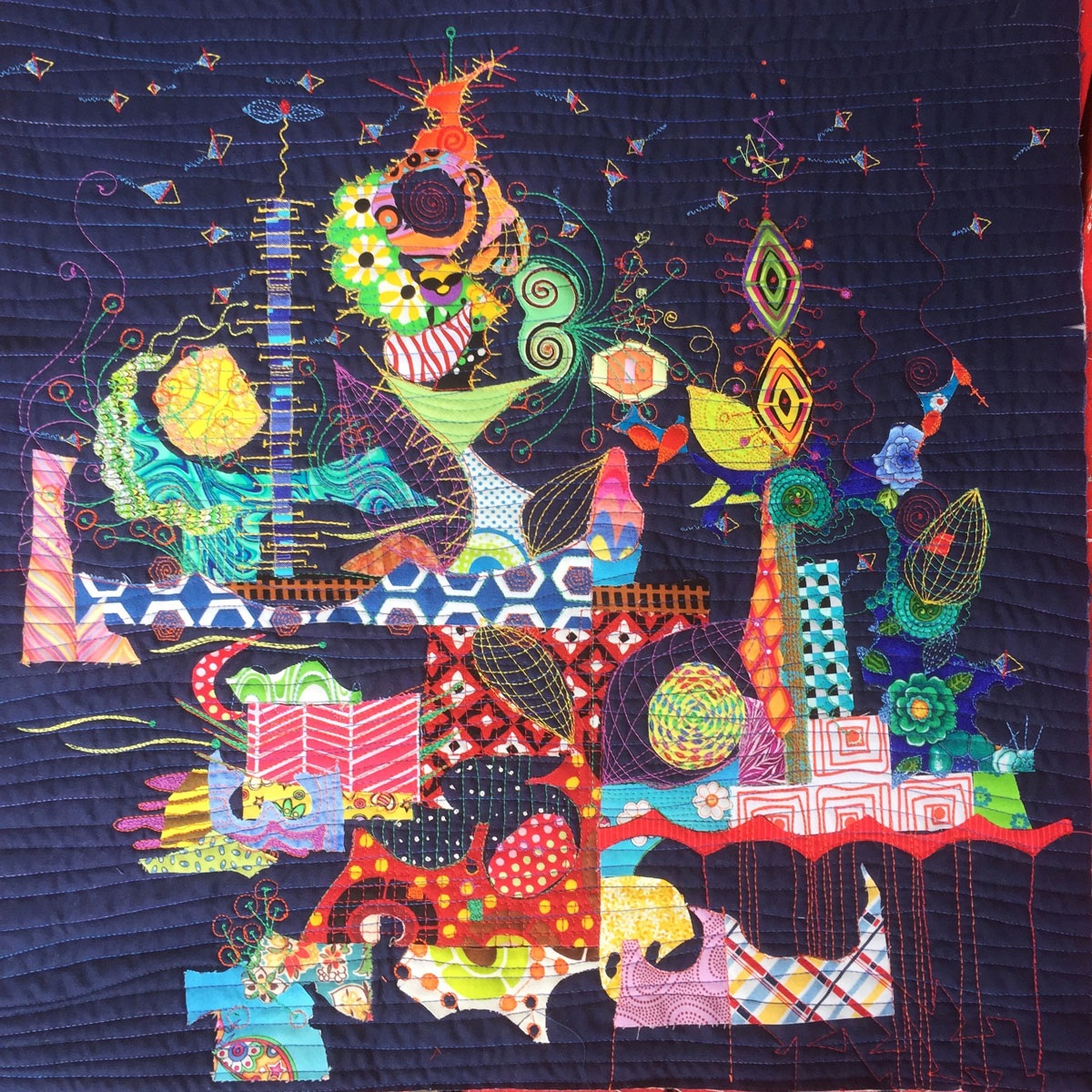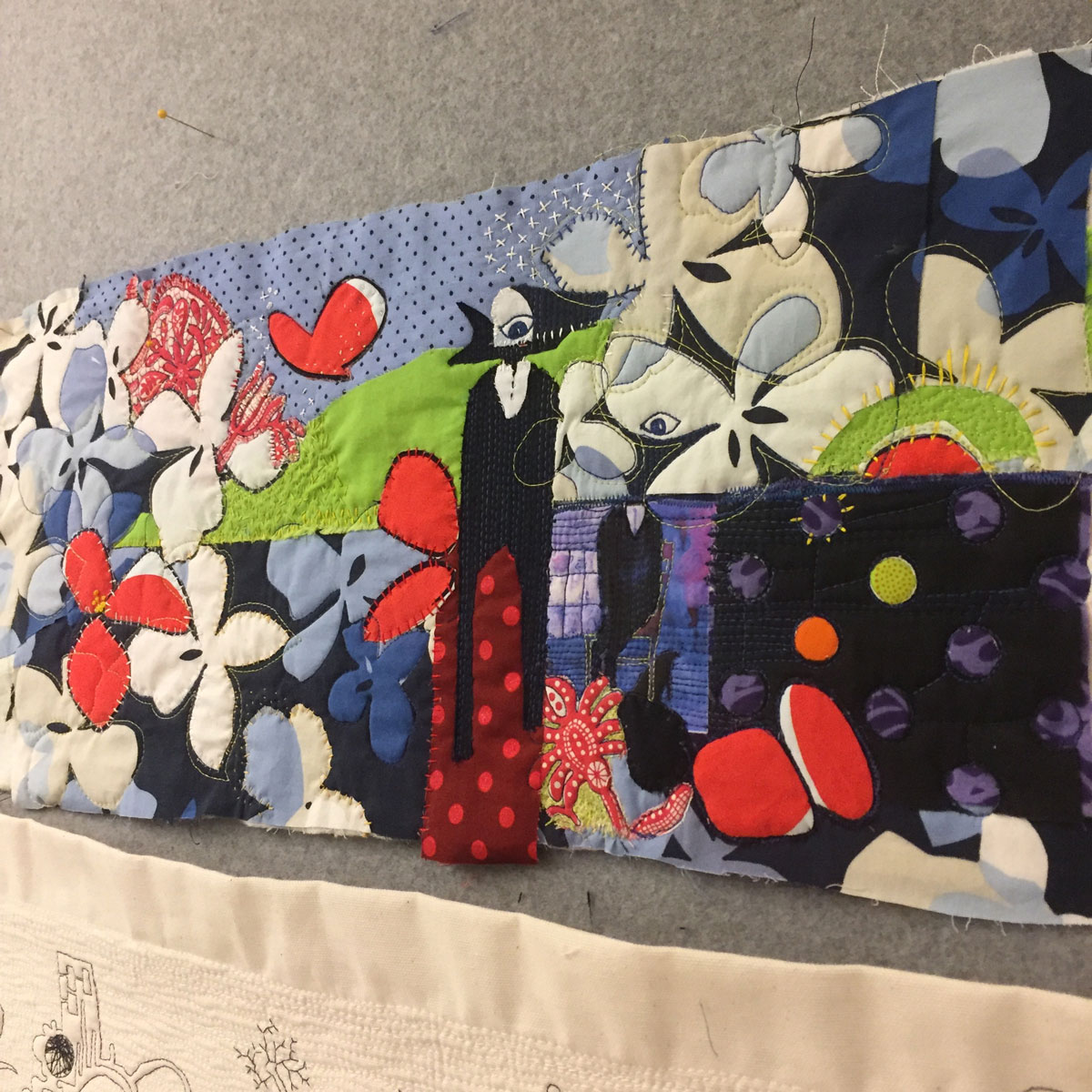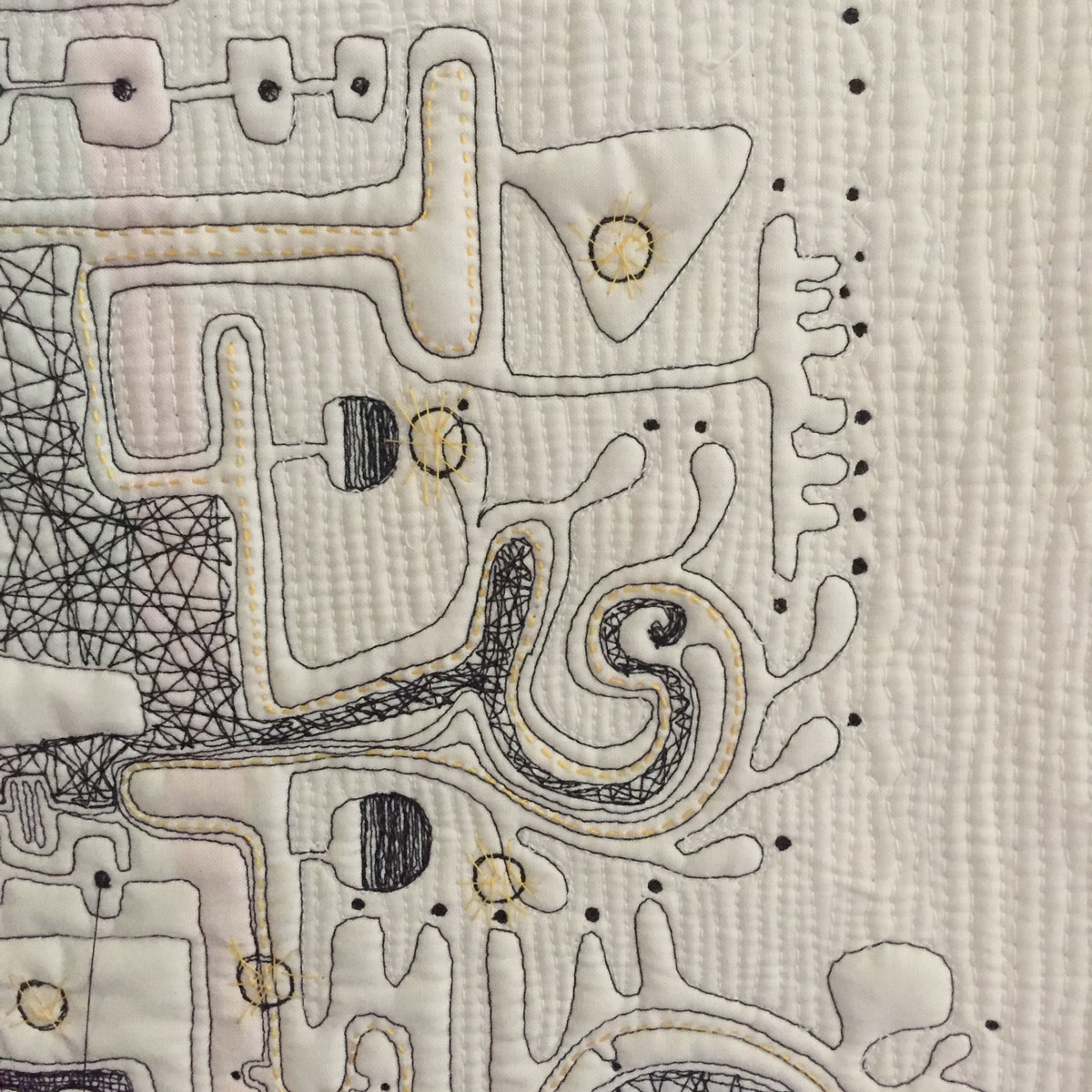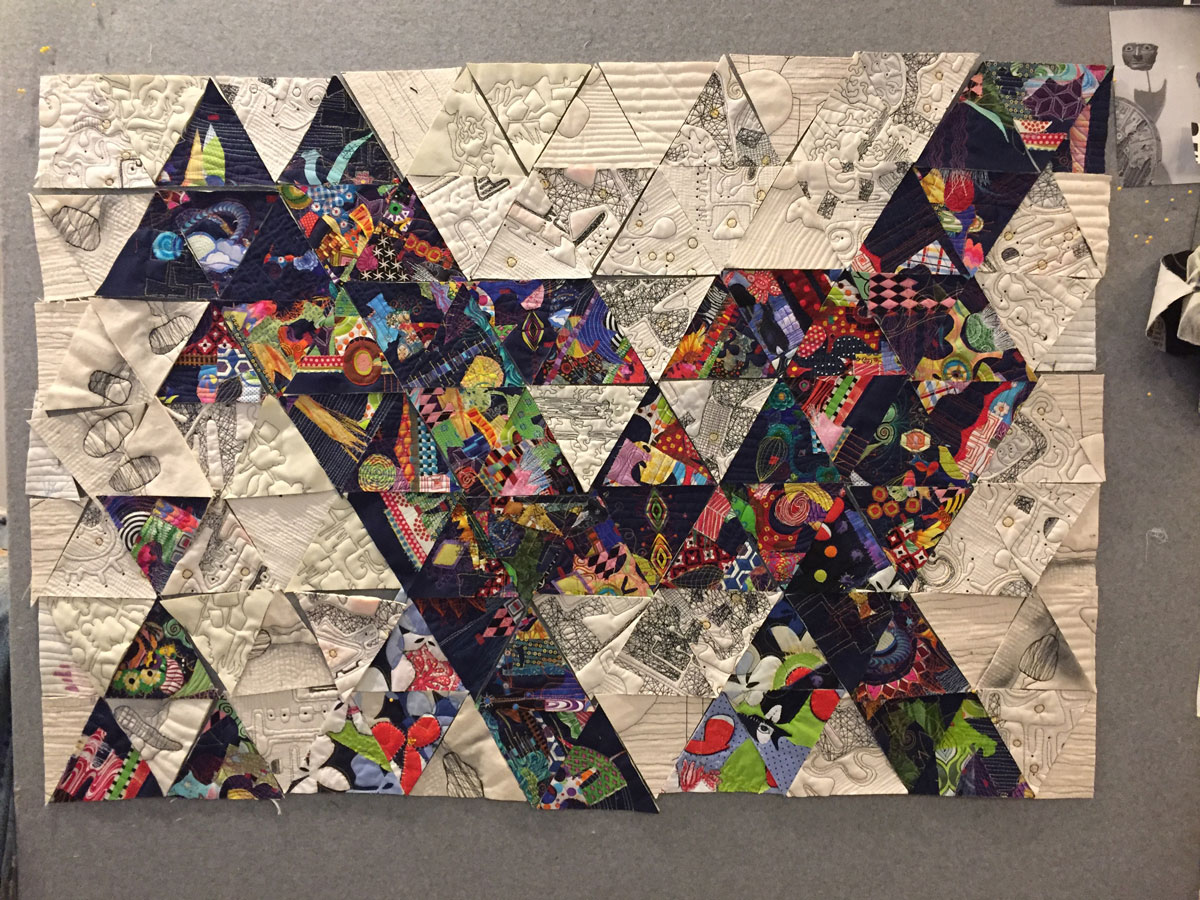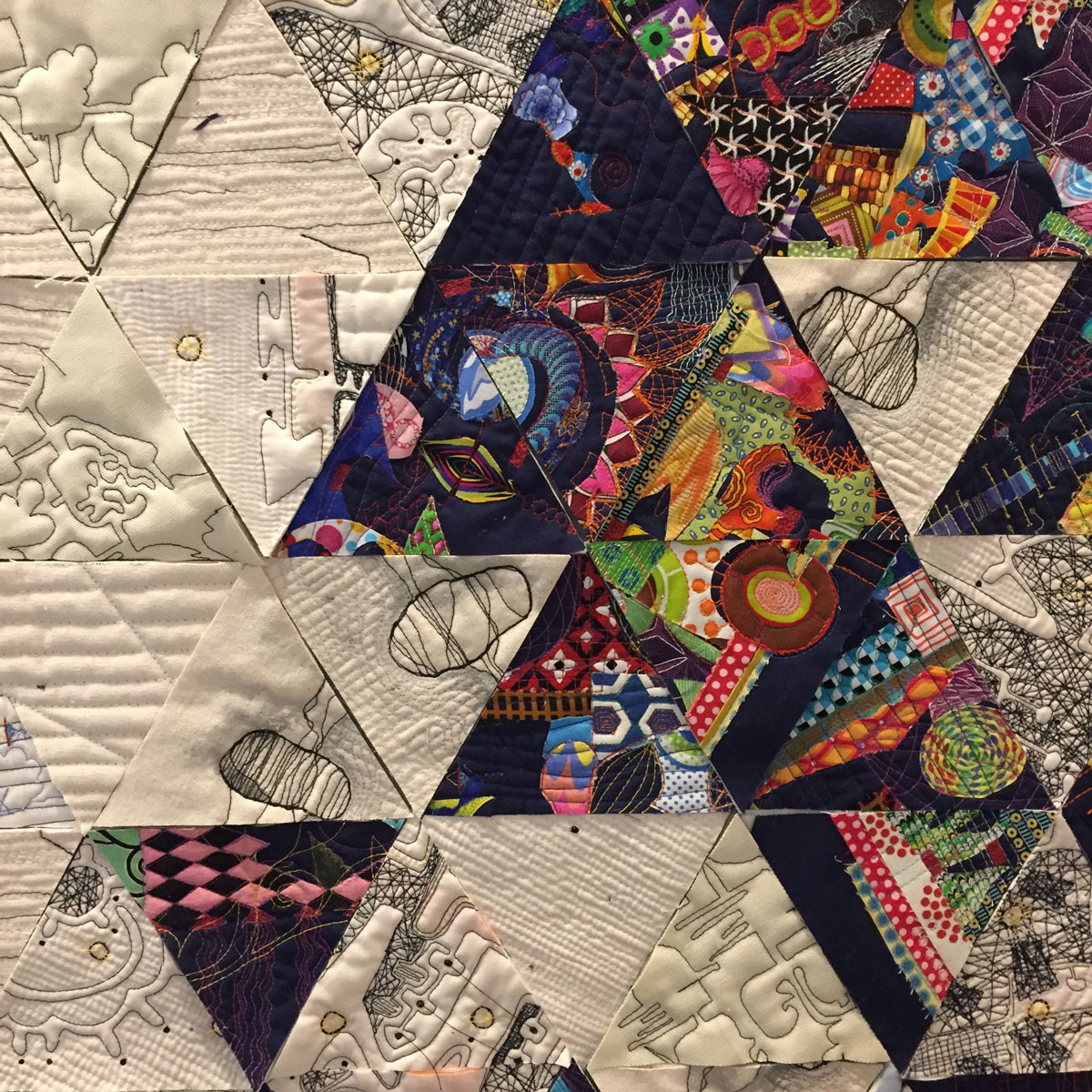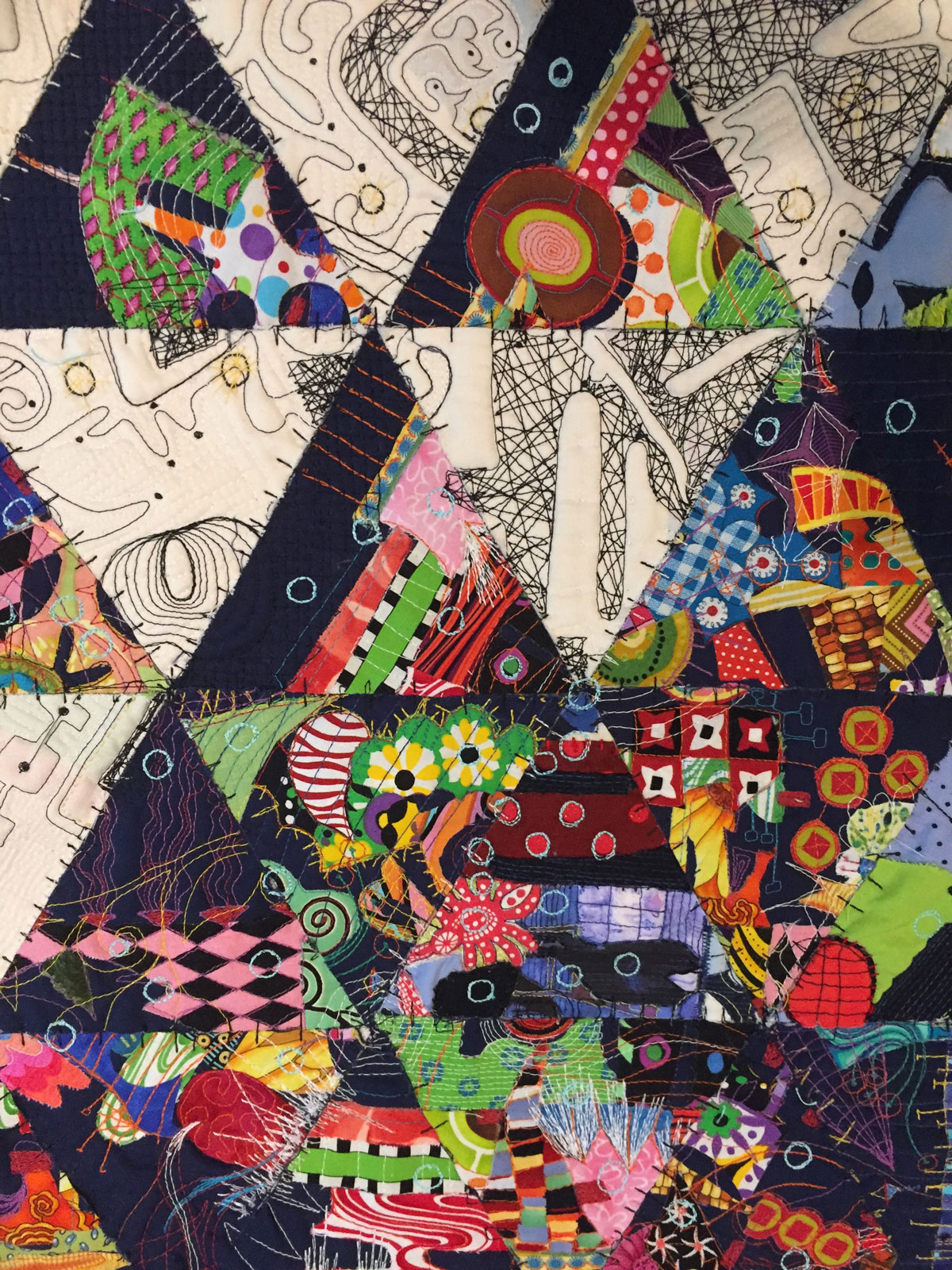I spent today stitching a new piece that has yet to be revealed here. It tracks with other pieces that focus on one line traveling across a surface of mystery. The work satisfies my need to be present and not distracted. It allows me to be playful and calm. It tracks my mood and challenges my sense of balance. Here’s a detail:
And, while I have been stitching, I have been thinking about other pieces I have finished in the past year. They range from narrative to expressive, 2-dimensional to 3-dimensional, abstract to figurative. I have cut up pieces and stitched them back together. In some pieces I have scurried over random textures in a frenzy of stitch. In other pieces I have calmly and sedately thought about balance and composition with an analytical focus.
Overseer, 45” x 54”, Paula Kovarik. Repurposed quilt pieces over-stitched and re-assembled.
You Don’t Know Me, work in progress, 3-dimensional assemblage, Paula Kovarik
In 2021, I will have a solo show that will hang at the Visions Art Museum in San Diego, California. I think the pieces I include should have a common thread —an integrated collection that speaks to my current work as an artist.


